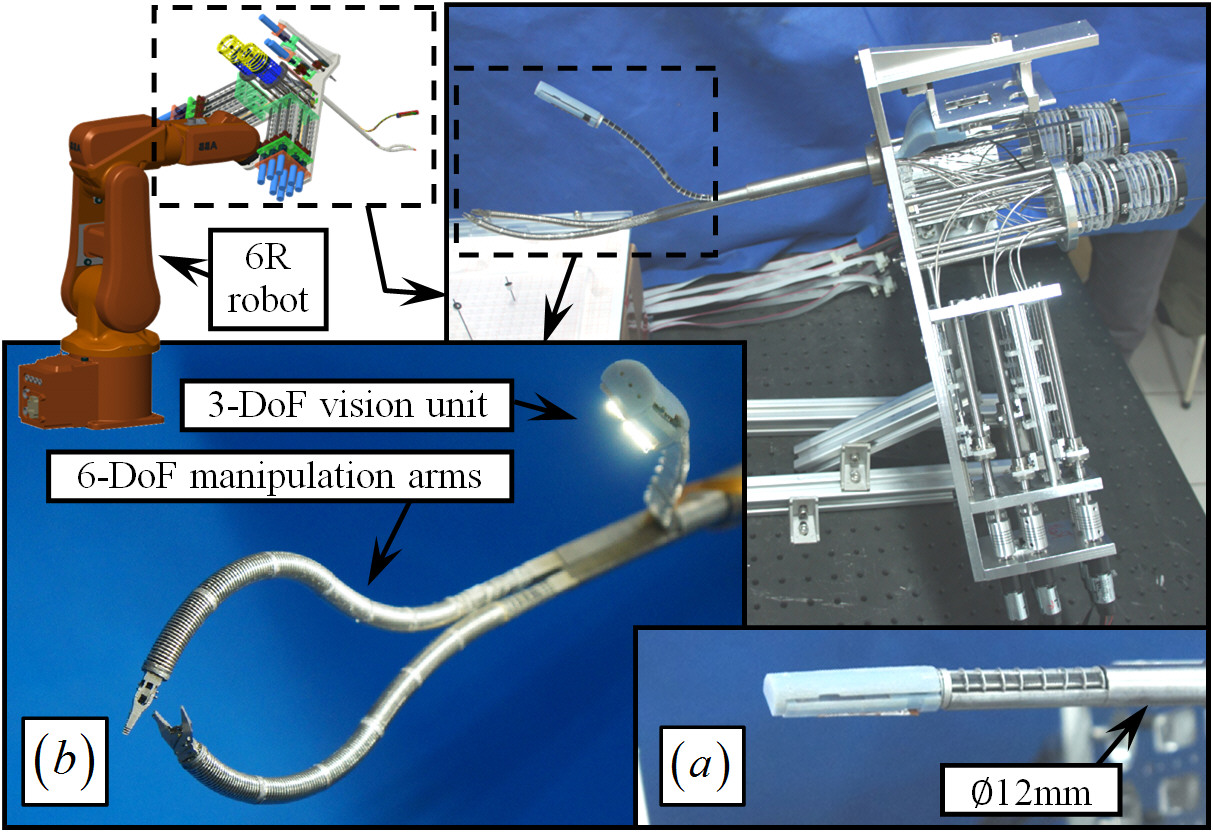From Rii
A Robotic Surgical System for Single Port Access Laparoscopy
September 2011 to present
![]() This work was supported by the Samsung Advanced Institute of Technology (SAIT) under the Global Research Outreach (GRO) program.
This work was supported by the Samsung Advanced Institute of Technology (SAIT) under the Global Research Outreach (GRO) program.
To meet the challenges of SPA surgeries, an Insertable Robotic Effector Platform (IREP) shown in the figure is designed by merging enabling technologies of endoscopic imaging (Hu, Allen et al. 2007; Hogle, Hu et al. 2008; Hu, Allen et al. 2008; Hu, Allen et al. 2008) and distal dexterity enhancement (Kapoor, Simaan et al. 2005; Simaan 2005; Xu and Simaan 2006; Xu and Simaan 2008; Simaan, Xu et al. 2009)
The IREP robot consists of two five-DoF snake-like continuum robots, two two-DoF parallelogram mechanisms, and one three-DoF stereo vision module. It is designed to meet the challenge of enabling abdominal SPA procedures, such as cholecystectomy, appendectomy, liver resection, etc. When it is in its folded configuration, it can be deployed into the abdomen through an Ø15mm skin incision while using its forward-looking stereo vision module to guide surgeons through the insertion phase. The IREP can then unfold itself into a working configuration to perform SPA procedures after being deployed.
- Each snake-like continuum robot includes four components: i) a gripper, ii) a one-DoF rotational wrist, iii) a four-DoF continuum snake arm and iv) a flexible stem. It acts as a surgical telemanipulation slave for dual arm interventions and delivery of sensors (e.g. ultrasound probe) or energy sources (e.g. cautery). During SPA procedures, each of the arms of the IREP robot can be independently pulled out and replaced with another arm equipped with different surgical end effectors.
- Each parallelogram mechanism has two degrees of freedom for a translational placement of the snake-like continuum robot. The flexible stem will be independently fed in and out to comply with the parallelogram’s motion.
- The stereo vision module has a pair of CCD cameras for depth perception as well as surgical tool tracking. It has three degrees of freedom for pan, tilt, and zoom. A light source using optic fiber bundles is also integrated.
- All these controlled joints will be actuated by NiTi tubes or stainless steel rods in push-pull mode. The actuation unit will remain outside patient’s body.

